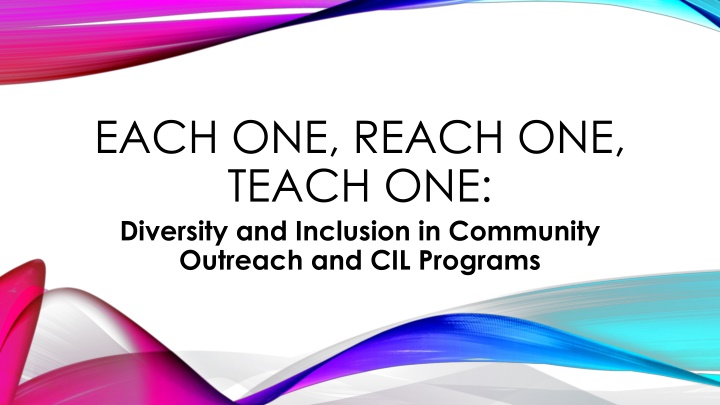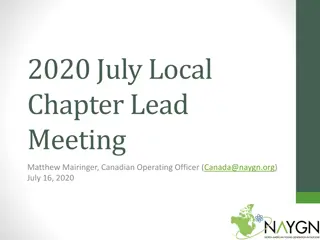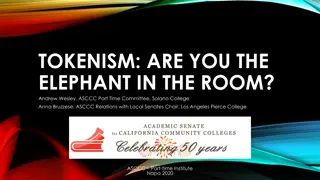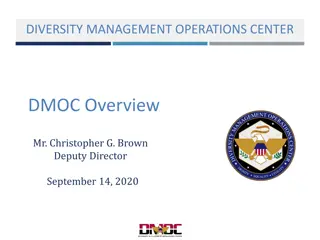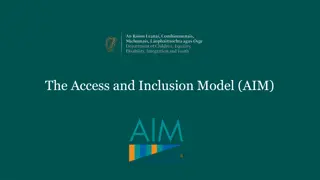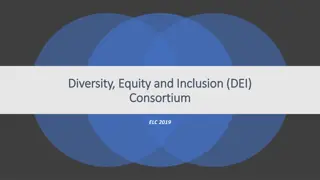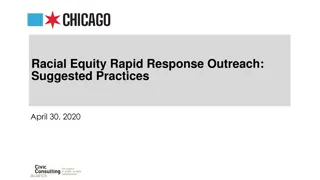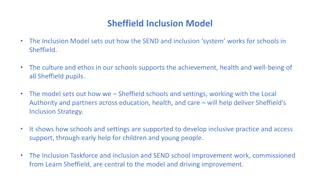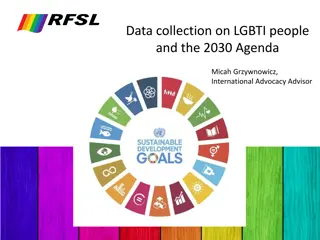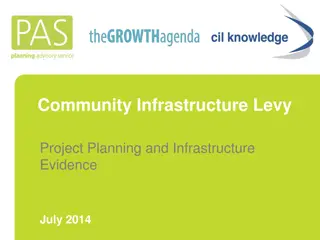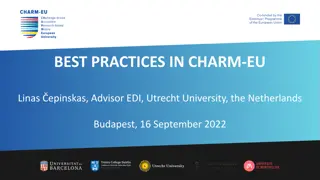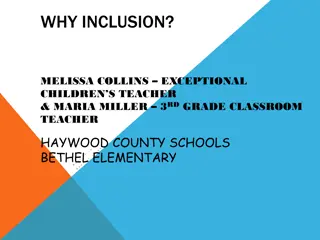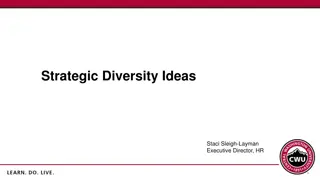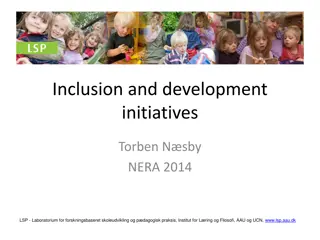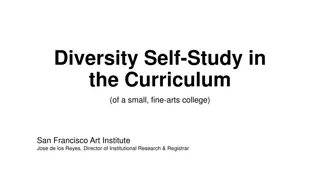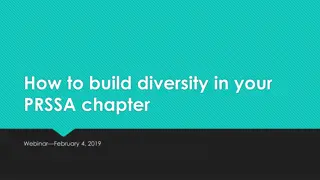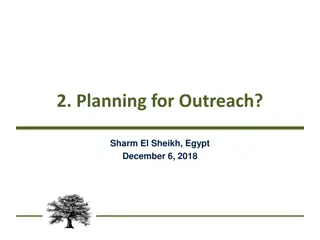Each One, Reach One, Teach One: Diversity and Inclusion in Community Outreach and CIL Programs
Explore the importance of diversity and inclusion in community outreach and Center for Independent Living (CIL) programs. Embrace individual uniqueness while fostering acceptance and respect for differences. Understand the connection between inclusion, motivation, and creating a welcoming environment for all. Engage in discussions on the impact of inclusivity and the power it holds in enhancing employee engagement and overall community prosperity.
Download Presentation

Please find below an Image/Link to download the presentation.
The content on the website is provided AS IS for your information and personal use only. It may not be sold, licensed, or shared on other websites without obtaining consent from the author.If you encounter any issues during the download, it is possible that the publisher has removed the file from their server.
You are allowed to download the files provided on this website for personal or commercial use, subject to the condition that they are used lawfully. All files are the property of their respective owners.
The content on the website is provided AS IS for your information and personal use only. It may not be sold, licensed, or shared on other websites without obtaining consent from the author.
E N D
Presentation Transcript
EACH ONE, REACH ONE, TEACH ONE: Diversity and Inclusion in Community Outreach and CIL Programs
WELCOME & INTRODUCTIONS disABILITY LINK is the name of our Center for Independent Living (CIL) William J. Thomas, Youth & Diversity IL Supervisor
SELF IDENTIFICATION William Thomas Dark brown extroverted, personable African American male, (he, him, his,) with short black curly hair, closely cropped goatee, person with a invisible disability. Don t make assumptions about someone s identity based upon physical appearances, stereotypes, or socially constructed norms; gender, sexuality, race, age, ability, sex, national origin, etc. The best thing is to use proper names and/or ask what pronouns/self- identification should be used.
WHY DO WE NEED TO TALK ABOUT THIS? The idea of Diversity & Inclusion: The concept of diversity encompasses acceptance and respect. It means understanding that each individual is unique, and recognizing our individual differences. These can be along the dimensions of race, ethnicity, gender, sexual orientation, socio-economic status, age, ability, religious beliefs, and political or other ideologies. www.qcc.cuny.edu/diversity/definition.html Social inclusion refers to the behaviors and social norms that ensure people feel welcome, ensuring all groups, irrespective of race or ethnicity, have meaningful voice and can live prosperous lives. Not only is inclusivity crucial for diversity efforts to succeed, but creating an inclusive culture will prove beneficial for employee engagement. (Ibid.)
WHY DO WE NEED TO TALK ABOUT THIS? CONT D Many make the mistake of thinking diversity means inclusion and end up measuring the diversity side because its easier to quantify while neglecting inclusion. Inclusion. https://www.peoplemanagement.co.uk/long- reads/articles/we-need-talk-diversity-inclusion#gref. Inclusion is a much broader construct and requires a change in the way people interact and the removal of obstacles. (Ibid) There is a connection between inclusion and motivation in the community and workplace. Question: is there anyone who would like to share an example of when they were included in something that caused you to be more motivated as a result?
SO LETS TALK ABOUT THIS Question: Is there anyone who would like to share an example of when they were included in something that caused you to be more motivated as a result? Question: Does anyone want to share an example of when they were excluded from participating in the community, so therefore were discouraged and reluctant to try again?
WHY IS THIS IMPORTANT? Why diversity matters? It has become more apparent that having diverse people and teams in the workplace creates a better atmosphere in the community and workplace https://wavelength.asana.com/workstyle-why- diversity-and-inclusion-matter. By developing and implementing strategies to include a more diverse and inclusive environment it will attract more people, create a welcoming environment, and spark creativity and empathy (Ibid). Inclusive [Environments] seek out and value individual perspectives, create a sense of belonging, and build deep alignment on a clear [objective] https://www.heidrick.com/en/insights/diversity- inclusion/why_diversity_and_inclusion_are_more_important_than_ever_durin g_the_covid19_crisis.
HOW DO WE UTILIZE THIS INFORMATION IN MY CIL? disABILITY LINK uses this information to encourages our consumers to participate in the following: Rev Up GA and Grassroots Connectors Bring together disability rights advocates to mobilize the community with information around voting and issues that affect them. disABILITY LINK Summer Internship To give individuals with disabilities opportunities to hold meaningful internships. NAUWU (Nothing About Us Without Us) Peer support for disability rights advocates, while remaining non-partisan, to inform, educate, and make a call to action on issues salient to the cross-disability community. Advocacy Days Trainings on legislative contacts and GA Capitol visits concerning: Housing, Education, Transportation, Health Care, and more. Virtual and Live Programs Our CIL offers in-person services and/or digital platforms with accessibility features: closed captioning, audio/voice descriptions, interpreters, etc.
DIVERSITY AND INCLUSION IN PRACTICE LGBTQIAP ++ disability: This group is designed for those at the intersection of LGBTQIAP+ and disability. We focus on public policy discussion and advocacy, inclusive community in LGBTQIAP spaces, and group social outings. disABILITY LINK received a Pride in Action grant to further the cause of outreach and participation in the continuing work for equity in the workplace and greater community for its LGBTQIAP++ disability demographic. Those identifying as LGBTQIAP and/or with a disability may be "othered," invisible to, or further stigmatized by the greater population. For these reasons, our CIL relies upon participation in community partnerships, networking with other agencies and sharing information on social media platforms to grow membership. Our group offers a safe space for sharing and peer support across the disability and sexuality spectrums. Us Protecting Us:This peer led group actively works on different responses to issues dealing with first responders and lawful enforcers. The group created and continues to improve upon a crisis response workshop to educate police and the community on how to prepare for and respond to potentially dangerous, yet non-criminal situations, such as mental illness and substance abuse; problems only exacerbated by the criminal justice system. In addition, this group provides guidance to different areas for policy on inclusive language.
DATA SHARING POPULATION WE SERVE Demographics: pertinent to diversity in our (12) county service area U.S. Census Statistics: snapshot Compare and contrasting socio-economic statuses, disability benefits, housing statistics, and availability of social programs. (ex: GA not a state with expanded Medicare benefits, as opposed to the NE and West Coast.
WHAT WOULD THE PROGRAM LOOK LIKE? Discussion ????????
HOW CAN WE DO A BETTER JOB OF SERVING EVERYONE WITH MORE EQUITY? Discussion????????
QUOTE: ALBERT EINSTEIN We must not only learn to tolerate our differences. We must welcome them as the richness and diversity which can lead to true intelligence. ~ Albert Einstein
QUOTE: MAYA ANGELOU We all should know that diversity makes for a rich tapestry, and we must understand that all of the threads of the tapestry are equal in value no matter what their color. ~ Maya Angelou
SHARING PERSONAL EXPERIENCE AND RESOURCES TO INSPIRE PEERS Our stories are our SuperPower when we share them with others! Offering empathy and support to others rewards everyone involved. Peers across the disability spectrum benefit from sharing strength, experiences, empathy, and encouragement. Question: What does Peer Support mean to you? Question: Why is Peer Support Important to you? Please share satisfying instances of giving and/or receiving Peer Support?
